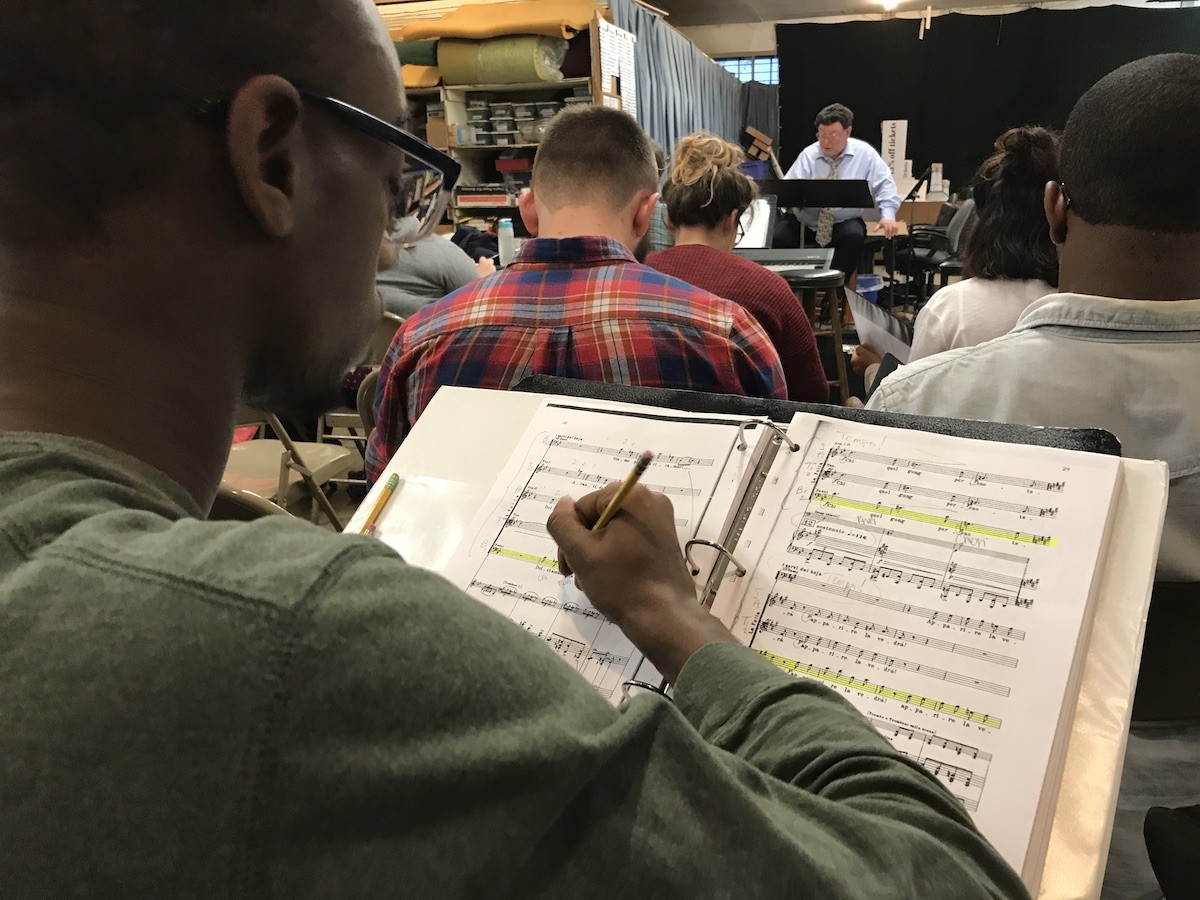With a gala concert to celebrate Knoxville Opera‘s 40th anniversary season on Oct. 27, instead of its usual fall opera production, KO is getting the chance to do something it has never been able to do.
Knoxville Opera has scheduled a series of 10 rehearsals for the chorus members, starting this week, instead of the chorus having to learn their parts at home alone for KO’s Feb. 23 and 25, 2018, production of Giacomo Puccini’s 1926 opera “Turandot.” “We’ve never had the luxury of time to be able to do that,” said KO chorus master Don Townsend. “We are also learning the music to next spring’s ‘Aida’ at the same time, on alternate weeks.”
Attending the first several rehearsals is optional for chorus members who prefer to learn as a group and also benefit from the pronunciation instructions from KO executive director and conductor Brian Salesky. To get the pronunciation correct, the “t” on the end of the word turandot is not pronounced, Salesky explained.
There’s a widespread misunderstanding that “Turandot” is a Chinese-themed story. It isn’t. Turandot is actually a Persian word that means “the daughter of Turan,” a territory that covered an area north of modern Iran, currently Uzbekistan, Kazakhstan and the northern areas of Afghanistan and Pakistan.
That makes the story of “Turandot” an Asian opera, but one set in Central Asia, not in China.
“Turandot” was written during the long period when awareness of the world’s exotic locales was just opening up to Europeans. Mozart,Beethoven, Mussorgsky and Brahms, as well as others, all wrote Turkish-themed music. The 1889 Paris Exposition Universelle brought more distant cultures to Europeans.
French composer, Claude Debussy, first heard the Indonesian gamelan at the 1889 exposition, kicking off interest in further geographic regions, including the Far East, leading to several works by Debussy and Ravel, as well as Puccini’s “Turandot,” which has, arguably, the most famous aria in all of opera, “Nessun Dorma.” Rimsky-Korsakov’s 1888 “Scheherazade,” based on the collection of Middle Eastern folk tales written in Arabic during the Islamic Golden Age, from the 8th-14th centuries, had heightened interest in Russian music.
Paul Gauguin’s impressionist paintings of exotic French Polynesia brought interest in far-off places into the visual arts. Chinese and Japanese brush paintings began to appear in European galleries, raising the interest level even more.
“Turandot” wasn’t performed until two years after Puccini’s death. He left the work unfinished. Puccini’s friend Franco Alfano was commissioned to complete the orchestration following the outlines Puccini had sketched for two additional scenes. These added scenes have become the standard in almost all “Turandot” productions, including KO’s performances. The great conductor Auturo Toscanini had Alfano shorten his work 109 bars because he felt that Alfano wandered off the artistic course Puccini would have followed, something Toscanini knew well from his many discussions about the opera with Puccini before his death.
At the premiere at La Scala in Milan in 1926, conductor Arturo Toscanini abruptly stopped the performance at the end of the scene during which the slave girl Liu sacrifices herself to save prince Calaf, who is in love with the heartless princess Turandot, historically and almost always portrayed as a Chinese princess.
Without performing Alfano’s fleshed out final two scenes: the love duet between Turandot and Calaf, or the closing scene that includes a triumphant chorus, Toscanini turned to the audience and announced “Here the composer died.”

